Filters: Collection: "ir_uspace" Year Start: 1970
| Creator | Title | Description | Subject | Date | ||
|---|---|---|---|---|---|---|
| 101 |
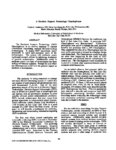 |
Warner, Homer R. | A Decision Support Technology Clearinghouse | Biomedical Informatics | 1988 | |
| 102 |
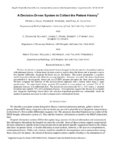 |
Warner, Homer R. | A Decision-Driven System to Collect the Patient History | Biomedical Informatics | 1987 | |
| 103 |
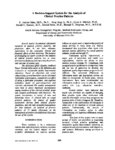 |
Mitchell, Joyce A. | A decision-support system for the analysis of clinical practice patterns | Several studies documented substantial variation in medical practice patterns, but physicians often do not have adequate information on the cumulative clinical and financial effects of their decisions. The purpose of developing an expert system for the analysis of clinical practice patterns was to a... | 1994-01-01 | |
| 104 |
 |
Barsky, Brian A. | A description of several tools for the synchronization of concurrent processes | Concurrent processes are tasks which may be executed simultaneously. When several such processes have access to shared variables, it is necessary to establish some regimen to control this access. Several language tools for expressing various synchronization disciplines are presented. | Concurrent processes | 1980 |
| 105 |
 |
Anderson, Richard Bryan | A dialogue on PDA | 2011 | ||
| 106 |
 |
O'Connell, James F. | A Different Paradigm for the Initial Colonisation of Sahul: Archaeological, genetic, demographic and geographic perspectives | The questions of when and how humans reached Sahul, the Pleistocene continent of Australia and New Guinea, has remained a central issue of Australian archaeology since its development as an academic discipline in the mid-twentieth century. Additionally, this has been a dominant theme linking Austral... | Sahul; Wallacea; colonisation; isolation; genomics; mitochondrial DNA | 2019-08-20 |
| 107 |
 |
A distributed garbage collection algorithm | Concurrent Scheme extends the Scheme programming language, providing parallel program execution on a distributed network. The Concurrent Scheme environment requires a garbage collector to reclaim global objects; objects that exist in a portion of the global heap located on the node that created them... | Concurrent Scheme; Garbage collection algorithm | 1992 | |
| 108 |
 |
Evans, John | A distributed object-oriented graphical programming system | This report presents the design of a distributed parallel object system (DPOS) and its implementation using a graphical editing interface. DPOS brings together concepts of object-oriented programming and graphical programming with aspects of modern functional languages. Programs are defined as netwo... | Distributed parallel object system; DPOS | 1990 |
| 109 |
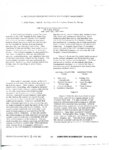 |
Warner, Homer R. | A Distributed Processing System for Patient Management | Biomedical Informatics | 1978 | |
| 110 |
 |
Narus, Scott P. | A domain analysis model for eIRB systems: addressing the weak link in clinical research informatics | Institutional Review Boards (IRBs) are a critical component of clinical research and can become a significant bottleneck due to the dramatic increase, in both volume and complexity of clinical research. Despite the interest in developing clinical research informatics (CRI) systems and supporting dat... | 2014-01-01 | |
| 111 |
 |
Mecklenburg, Robert | A dossier driven persistent objects facility | We describe the design and implementation of a persistent object storage facility based on a dossier driven approach. Objects are characterized by dossiers which describe both their language defined and "extra-linguistic" properties. These dossiers are generated by a C+-f- preprocessor in concert ... | Persistent object storage facility; Dossier driven | 1994 |
| 112 |
 |
Zhang, Lixin | A DRAM backend for the impulse memory system | The Impulse Adaptable Memory System exposes DRAM access patterns not seen in conventional memory systems. For instance, it can generate 32 DRAM accesses each of which requests a four-byte word in 32 cycles. Conventional DRAM backends are optimized for accesses that request full cache lines. They m... | Impulse Adaptable Memory System; DRAM | 1998-12-16 |
| 113 |
 |
Sobh, Tarek M. | A dynamic framework for intelligent inspection | CAD (Computer Aided Design) typically involves the design, manufacture and inspection of a mechanical part. The problem of reverse engineering is to take an existing mechanical part as the point of departure and to inspect or produce a design, and perhaps a manufacturing process, for the part. We pr... | CAD; Discrete event dynamic systems; DEDS | 1992 |
| 114 |
 |
Sobh, Tarek M.; Henderson, Thomas C. | A dynamic framwork for intelligent inspection | CAD Computer Aided Design typically involves the design manufacture and inspection of a me chanical part. The problem of reverse engineering is to take an existing mechanical part as the point of departure and to inspect or produce a design and perhaps a manufacturing process for the part. ... | CAD; Manufacture; Inspection; Intelligent inspection | 1992 |
| 115 |
 |
Sobh, Tarek M.; Henderson, Thomas C. | A dynamic recursive structure for intelligent exploration | We suggest a new approach for inspection and reverse engineering applications. In particular, we investigate the use of discrete event dynamic systems (DEDS) to guide and control the active exploration and sensing of mechanical parts for industrial inspection and reverse engineering. We introduce dy... | Intelligent exploration; Discrete event dynamic systems; DEDS; Dynamic recursive finite state machines; DRFSM | 1992 |
| 116 |
 |
Sobh, Tarek M.; Henderson, Thomas C. | A dynamic recursive structure for intelligent inspection | We suggest a new approach for inspection and reverse engineering applications. In particular we investigate the use of discrete event dynamic systems DEDS to guide and control the active exploration and sensing of mechanical parts for industrial inspection and reverse engineering?? We introduce... | Intelligent inspection; Discrete event dynamic systems; DEDS; Industrial inspection; Dynamic recursive structure | 1992 |
| 117 |
 |
Fogel, Alan Dale | A dynamic systems approach to infant facial action | What does it mean when a baby smiles? Is it an expression of enjoyment, a signal to a partner that rewards effective caretaking, or simply a muscular contraction? Do physically different types of smiles indicate different things? Should the social context in which an infant smiles inform our unders... | 1997 | |
| 118 |
 |
Whitaker, Ross T. | A fast iterative method for a class of Hamilton-Jacobi equations on parallel systems | In this paper we propose a novel computational technique, which we call the Fast Iterative Method (FIM), to solve a class of Hamilton- Jacobi (H-J) equations on massively parallel systems. The proposed method manages the list of active nodes and iteratively updates the solutions on those nodes u... | Fast Iterative Method; FIM; Parallel systems | 2007 |
| 119 |
 |
Whitaker, Ross T. | A fast iterative method for solving the eikonal equation on triangulated surfaces | 2012 | ||
| 120 |
 |
Smith, Kent F. | A fast parallel squarer based on divide-and-conquer | Fast and small squarers are needed in many applications such as image compression. A new family of high performance parallel squarers based on the divide-and-conquer method is reported. Our main result was realizing the basis cases of the divide-and-conquer recursion by using optimized n-bit primiti... | Squarer; Parallel squarers; Divide-and-conquer; MOPS; CMOS | 1995 |
| 121 |
 |
Mathews, V. John | A fast recursive least-squares adaptive nonlinear filter | This paper presents a fast, recursive least-squares (RLS) adaptive nonlinear filter. The nonlinearity in the system is modeled using the Hammerstein model, which consists of a memoryless polynomial nonlinearity followed by a finite impulse response linear system. The complexity of our method is abou... | 1988 | |
| 122 |
 |
Mathews, V. John | A fast recursive least-squares second order volterra filter | ABSTRACT This paper presents a fast, recursive least-squares (RLS) adaptive nonlinear filter. The nonlinearity is modelled using a second order Volterra series expansion. The structure presented in the paper makes use of the ideas of fast RLS multichannel filters and has a computational complexity ... | 1988 | |
| 123 |
 |
Henderson, Thomas C.; Hansen, Charles D. | A fault tolerant sensor scheme | Multi-sensor systems pose the problem of how to coherently and efficiently treat the data provided by the various sensors. However. the availability of greater numbers of sensors also broadens the ability to build fault tolerant sensor systems. We define a framework in which sensors can be abstractl... | Multi-sensor systems; Logical sensors | 1983 |
| 124 |
 |
Lenart, Joshua B. | A Feasibility Study of a Transfer of Federal Lands: Assessing the Triple Bottom Line | This feasibility study identifies various aspects of the proposed transfer of public federal lands to individual states by characterizing the most significant challenges that the transfer entails for civil and environmental engineers. | 2016 | |
| 125 |
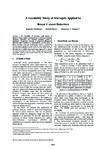 |
Simpson, Jamesina J. | A feasibility study of microjets applied to breast cancer detection | The feasibility of detecting small tumors of diameter 0.5mm inside a human breast is demonstrated using microjets. Microjets are photonic nanojets scaled to microwave frequencies wherein a plane-wave-illuminated dielectric sphere produces a high-intensity, narrow beam of light extending from the sha... | 2012-01-01 |
